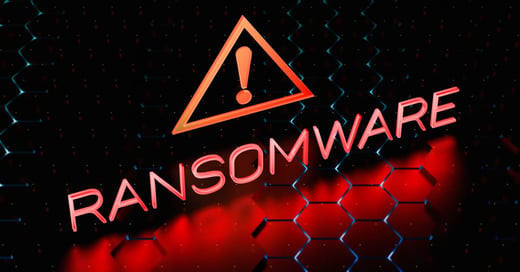Does your enterprise have a spare half million dollars to spend recovering from a ransomware attack? Maybe, but I’m sure your board would prefer to spend that cash elsewhere.
The average cost of a ransomware breach in 2022 is around half a million bucks, according to research by IBM. The same study showed that ransomware attacks are on the rise, increasing by forty-one percent in the past year. What can your organization do to keep yourself protected and avoid joining those statistics?
This post will cover four essential tips and tools for enterprise ransomware protection. After reading, you should have all the information you need to put a plan in place to keep your business and data secure.
What is Enterprise Ransomware Protection?
Enterprise ransomware protection is a set of security measures and technologies that protect businesses from ransomware attacks. Protection typically includes a combination of software, hardware, services, and procedures that prevent, detect, and respond to ransomware attacks.
The Importance of Enterprise Ransomware Protection
Ransomware has been a threat to organizations and individuals alike for decades. The first ransomware attack was reported back in 1989. The virus was released via floppy disk and required the victims to send an envelope with $189 cash to a P.O. box in Panama to restore access to their systems.
Cybercriminals no longer conduct their attacks using floppy disks, but ransomware attacks have become increasingly common, especially for banking, education, and utility organizations.
Even if your enterprise does not fall into one of these industries, that does not mean you are safe from ransomware attacks. Any organization with data worth protecting should take steps to protect itself against ransomware attacks.
Social engineering attacks are some of the most common vectors for ransomware attacks. Email attachments, phishing attacks, and other similar approaches are common methods of infecting your network with ransomware.
Related Read: 3 Ways to Mitigate the Human Factors of Cyber Security
Though ransomware can threaten anyone, enterprises face a few unique challenges related to this type of attack. Firstly, the sheer size of your organization makes you a more appealing target for a more sophisticated hacker.
Additionally, large organizations with many employees may be more appealing to social engineering attacks. The more employees, the more challenging it is to conduct effective cyber security training regularly.
With this information in mind, let’s review our four essential tips for enterprise ransomware protection.
1. Conduct Regular Employee Training
As discussed in the previous section, many ransomware attacks originate from social engineering attacks. You can help secure your organization’s data and protect yourself from ransomware attacks by conducting regular training around the following topics:
- Phishing
- Social engineering
- Email best practices
- Basic password maintenance and management
Related Read: 5 Essential Email Security Tips for Businesses
Most ransomware originates from an entry point where a user’s login credentials are compromised. As a result, regular employee training can help protect your organization from this attack. Training employees on how to spot and report suspicious emails, for example, can help mitigate cybersecurity risks like phishing and ransomware attacks.
2. Keep Software Up-to-Date
Are all your software solutions running on the latest version? If not, you may leave your network open to ransomware attacks.
Older versions of software solutions often have vulnerabilities. Hackers can exploit these vulnerabilities to breach your system and hold your data hostage. Keeping your software up-to-date helps you close those known gaps and reduces your risk of a breach.
You may choose to automate your software updates if possible to ensure that all software and applications are updated every time a new version is released.
3. Adopt a Zero Trust Architecture
Adopting a Zero Trust Architecture is another option to protect your enterprise from ransomware attacks. This approach to cybersecurity posits that the traditional cybersecurity approach is fundamentally wrong.
Rather than protecting your perimeter and assuming that all actors within the perimeter are trusted, Zero Trust works by providing the minimum possible access to every user in your system. This setup ensures users only access the data they need when needed. This principle, fundamental to Zero Trust, is known as Least Privilege.
Under Zero Trust, users, devices, and services must be continuously verified. This approach limits an intruder’s access and ability to move laterally within your system. If a hacker breaches your network, Zero Trust will limit the data they can access.
Additionally, the individualized access and user keys make it easier to pinpoint the source of a breach when data is accessed inappropriately. As a result, you’ll be able to head off and potentially mitigate the impact of a breach more easily.
Related Read: How To Apply The 7 Zero Trust Pillars To Your Network (+ FREE Guide)
A Zero Trust Architecture allows you to enforce dynamic cybersecurity policies across four layers: Identity, device/workload, access, and transaction. As you can see, Zero Trust does not stop with authentication and authorization. Rather, Zero Trust is an all-encompassing solution with capabilities like system hardening, network monitoring, and more.
In the present culture of increased remote work and BYOD policies, Zero Trust is more important to enterprise security than ever before. Sixty-eight percent of businesses believe Zero Trust is the key to maintaining security in this new “work from anywhere” environment.
Implementing a Zero Trust Architecture can provide your organization with benefits beyond enterprise ransomware detection, including protection from unknown cyber threats, reduced incident response time, and greater scalability.
4. Implement a System Integrity Assurance Tool
System Integrity Assurance identifies, prohibits, and remediates unknown or unauthorized changes in real-time. This type of tool empowers your team to maintain a continuously compliant IT infrastructure in less time, with less effort.
How can this help with enterprise ransomware detection? Simple: With a tool like CimTrak, you can benefit from the following features.
- Real-time automated detection:
CimTrak logs all changes made to target systems and applications. With this tool, you’ll be able to identify the source of a change or breach instantaneously. - Dynamic version control:
This feature stores “snapshots” of your files and configurations as changes occur. Having these backups means that even if your current version of a file or configuration is locked for ransom, you have access to the backup file. - Immediate change reconciliation:
Suppose an attacker gains access to your system via an employee’s credentials and changes a file or security setting. In that case, CimTrak can “self-heal,” automatically reversing those unauthorized changes upon detection. - Unexpected change prevention:
Do you have files or directories that should never change? You can use CimTrak to prevent changes to these files entirely, avoiding the challenge of unauthorized changes altogether.
Achieving Successful Enterprise Ransomware Protection
Ransomware attacks cost enterprises millions yearly. To avoid joining the ranks of businesses forced to shell out large sums just to obtain access to their own data once more, you’ll need to take proper precautions.
Using the tactics and tools on this list, you can set your enterprise up for success in mitigating the risk of ransomware attacks. Solutions like Zero Trust and System Integrity Assurance can also aid in recovery efforts in the event that an attack occurs.
Implementing a tool like CimTrak can help you with every step of the prevention and recovery process. Explore features like dynamic version control, automated change detection, and more with our Instant Preview today!
Tags:
Cybersecurity
February 16, 2023




